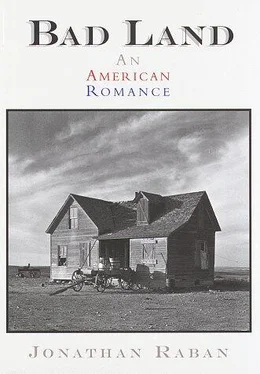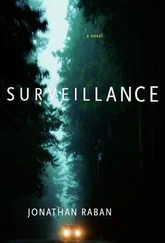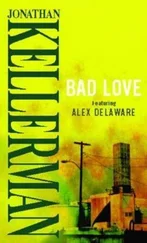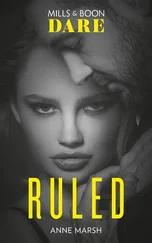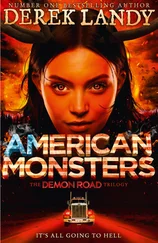It was good to be back, however briefly, in a land of likenesses. The Plains proper had no precedent in my experience — as they had no precedent in the experience of the homesteaders who settled there. The Musselshell valley was companionable; less lonely by far, because so full of echoes of the old, known world.
I pulled into the forecourt of the Big Sky Motel at Roundup. The title of A. B. Guthrie, Jr.’s 1952 novel had a mysterious, philoprogenitive life of its own — it was on every Montana license plate, and there wasn’t a town in the state without a Big Sky auto-repair shop, or a Big Sky food mart. The title was a runaway bestseller, though the book itself was, in my estimation, tough; too many pages of talk in cornpone dialect. My Big Sky room was quiet, well appointed, and appropriately big; I was surprised to find a notice on the writing table which said Persons renting the rooms are responsible for undue destruction.
On my way out to dinner, I stopped by the office, to find out what was the acceptable level of due destruction, and who these unduly violent guests might be.
“Hunters,” the woman said. “They clean game in the rooms.”
“You mean — the disemboweled stag on the rug?”
“Not quite, but we’ve come close.”
On the first page of The Big Sky , a man returns home with “a ball in his thigh and the bloody hide of an Indian in his knapsack.” He had kept the scalp and tanned the skin and made himself a razor strop out of it. No wonder native Montanans practiced butchery in their motel rooms, if A. B. Guthrie was a reliable guide to Montana tradition.
Sheaf of books in hand, I crossed the street to the Pioneer Café, where I spread them on the table, and worked through my meal. I wanted to check the population of Melstone, and looked it up in the Rand McNally Montana gazetteer. There was nothing between Medicine Lake (357) and Miles City (8461), though Melstone, with its high school, post office and its twenty streets of trailers must have been twice as big, at least, as Medicine Lake. Rand McNally had done to the town what the Milwaukee Road did to half of Montana and the Dakotas. Melstone had been conveniently abolished.
In Steve McCarter’s Guide to the Milwaukee Road in Montana , I looked up Earling, Albert J. There wasn’t much. “A tough railroader who had come up through the ranks to assume the presidency.” A photograph, taken near Butte in 1915, showed Earling standing in a group of other railroad officials. He was short (like James J. Hill), with a fringe of white beard, and a big belly, thinly concealed by his black overcoat. I held the picture close to the lamp on the table. Was he wearing wire-rimmed glasses? I thought so.
During the day, I had become obsessed with Earling and his blithe disregard for natural limits. There never should have been a railroad line between Forsyth and Melstone: the country was too rough, the gradients too steep. That hadn’t stopped Earling from building one — or from quilting that unsuitable land with market towns and homesteads. Along the entire route of the Milwaukee Road, Albert Earling created as many ruins by accident as Tamburlaine the Great had done on purpose.
Still on the Musselshell, a hundred miles southeast of Great Falls, something was happening in the far distance. The sky appeared to curdle, as the Rocky Mountains slowly disentangled themselves from the clouds. It was a great moment for the refugees from Ismay, as at last they caught sight of the dark, knobbly spine of the United States. Beyond the Rockies lay the new new world — wet, timbered, moss-green, squelchy, fertile. With the mountains now in sight, the old new world of prairie dust was suddenly, definitively, behind them.
US 191 followed the north-going spur of the Milwaukee Road, through Judith Gap, and on to Great Falls and the Fairfield Bench. The luckiest of the homesteaders — as it eventually turned out — were those who clung on longest to their half-sections before letting go. People who managed to hold out until 1937 were rescued by the New Deal, when Rexford Tugwell’s Resettlement Administration offered them the chance to move, on easy terms, to small farms on irrigated land.
The WPA operated dozens of these projects in the West, with an army of workers (many of them ex-homesteaders) damming rivers, digging canals and ditches, and diverting water to hitherto arid soil. But for the community of desperate farmers around Ismay, it was the Fairfield project that everybody talked about.
The offer was this. The government would sell you a plot of land, with a WPA-built two-bedroom single-story farmhouse, a barn and a hog-and-hen house, on a fixed-rate mortgage of 4 percent, repayable over forty years. Price: $4,500 for 80 acres, $6,000 for 160 acres. This worked out at $32.50 a month for the quarter-section farm.
To many people, the offer was irresistible — a steal. The government would be the farmer’s landlord. The government would buy his crops, and tell him what to grow. On a proved-up homestead, the farmer at least had a certain shabby independence; he wasn’t beholden. On the Fairfield deal, he’d be a government pensioner. He might as well be a fur-hatted comrade on a farm collective in Stalin’s Russia.
Henry Zehm said he wasn’t going. The Seventh Day Adventist was deeply suspicious of the scheme. The forty years of debt went against the grain of his character. He didn’t hold with “irrigation.” The homesteaders had been taken in once too often by fancy science.
Zehm enjoyed wrangling with his neighbors, the Paddocks, who were farming the old Wollaston place as tenants. Cliff Paddock had declared himself for Fairfield; Zehm tried to dissuade him. Wynona Breen told me: “Dad thought the Paddocks were getting themselves into something they’d never, ever, get out of. They were forty years old, and now they were going to put themselves in debt for another forty years? They were just tying their children down. That was Dad’s thinking, and when Dad was talking to Cliff, he was sure he was doing the right thing; but when Cliff was no longer around, Dad had his doubts. Cliff sure seemed to be doing well out at Fairfield, and Dad brooded a long time over that.”
The Paddocks sent their stock, tools and furniture out to Fairfield in a Milwaukee Road boxcar. The family followed in their Ford.
Now, closing with Great Falls, and back in dry and rolling cattle country, I could sense the apprehension of the Fairfielders as they approached their new home. There was little in the landscape to reassure them. The earth was as dusty as that of Ismay. The air was thinner. There were no trees.
But the city of Great Falls was a surprise. It was moneyed and well fed, its big Victorian houses encrusted with decks and pillars. The streets were lined with old sycamores, and the lawns were verged with tall shrubberies. The sheer buzz of population in the city was something to wonder over, after the long emptiness of the drive west. Downtown, great sand-colored fortresses, street after street of them, held offices and department stores. Children pressed their faces to the windows of the car — the place was a five-story Manhattan.
Warehouses and shunting yards hid the Missouri from view till the last moment. The river presented itself suddenly from behind a wall of brick: wide, brown, wind-chased. It looked like the Mighty Mo, even this close to its source. A low trestle bridge carried the Milwaukee Road line over the water.
There was a sign for Fairfield beyond the bridge, and, west of the Missouri, the character of the country changed again. The land flattened, became veined with small creeks, and farms appeared, at increasingly short intervals, until they were half a mile or less apart. I saw one poplar tree — and then there were dozens of them, forming avenues and shelterbelts. Fringes of tall, browning grass defined fields of plowed soil, the color of milk chocolate. I was back in the world of likenesses; this was a Dutch landscape, a memory of Friesland in winter … dung-smelling townlets, with names like Tjum and Twizel.
Читать дальше
